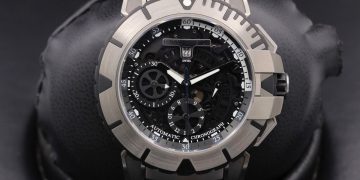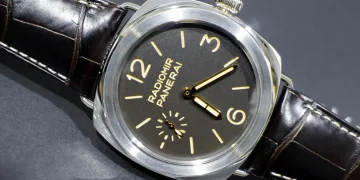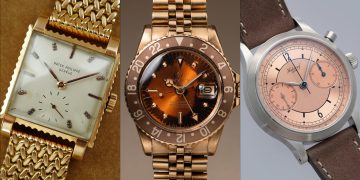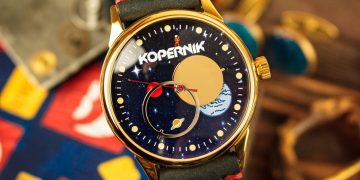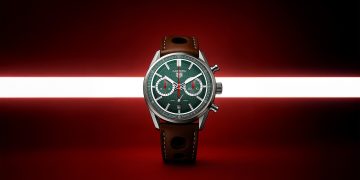Introduction:
Luxury watches have long been more than just timekeeping devices. In contemporary society, they have evolved into symbols of status, success, and personal identity. The concept of owning a high-end watch, such as a Rolex, Patek Philippe, or Audemars Piguet, is often intertwined with notions of prestige, wealth, and exclusivity. But in the modern world, where consumer goods are increasingly democratized and the meaning of luxury continues to evolve, the symbolic role of luxury watches is also undergoing significant shifts.
In this article, we will explore how luxury watches function as cultural symbols in contemporary society, examining their role in status signaling, individual expression, and the evolving concept of luxury. We will also look at the tension between tradition and modernity, and how the perception of luxury watches is shaped by broader societal values, globalization, and changing consumer behavior.
1. Luxury Watches as Status Symbols
1.1 The Enduring Appeal of Status Signaling
The role of luxury watches as status symbols is perhaps their most well-known function. For decades, luxury watch brands have positioned their products as exclusive and elite, attracting those who wish to project a sense of affluence and success. Owning a Rolex Submariner, for example, has long been associated with wealth and achievement, and is often worn by individuals seeking to signal their social standing.
In many societies, luxury watches are not just a means of telling time; they are a statement of personal accomplishment. Wearing an expensive watch is often seen as a subtle way to communicate economic success, much like a high-end car or an exclusive piece of real estate. This connection between wealth and luxury watches is deeply ingrained in contemporary culture, particularly in places like North America, Europe, and parts of Asia.
1.2 The Shift in Significance: From Function to Fashion
While luxury watches were once primarily tools for measuring time, their function in modern society has largely shifted towards fashion and status signaling. Watches like the Audemars Piguet Royal Oak or Omega Speedmaster have become symbols of taste, refinement, and style rather than mere timekeeping instruments. In today’s market, the ability to afford such watches signals that an individual has not only achieved financial success but also possesses cultural capital—an understanding of luxury and style.
Moreover, as smartwatches and other technology-driven wearables gain popularity, the luxury watch industry has increasingly relied on its historical heritage and craftsmanship to maintain its position as a symbol of wealth and social distinction. The symbolism of a luxury watch is tied to its brand heritage, its technical mastery, and the perception of exclusivity it carries.
2. Watches as Expressions of Individual Identity
2.1 A Reflection of Personal Style
In addition to signaling status, luxury watches serve as a form of self-expression. For many watch collectors and enthusiasts, a luxury watch is an extension of their personal identity. The choice of a particular brand or model can reflect an individual’s taste, values, and lifestyle. For instance, an individual who wears a Patek Philippe Calatrava may be signaling a preference for understated elegance, while someone with an Hublot Big Bang may be emphasizing a love for boldness and modernity.
The diversity of luxury watch offerings today allows consumers to align their timepiece with their personal narrative. Whether choosing a watch based on its history, design, or mechanical features, individuals often see their watches as representations of their character. This trend is particularly prominent among younger consumers, who are increasingly looking for ways to align their purchases with their personal values and lifestyles.
2.2 Watches as Heirlooms and Legacy
Luxury watches also have deep symbolic meaning in the context of family legacy and heirlooms. Many high-end watches are passed down through generations, carrying with them not just the intricate craftsmanship of their time, but also a sense of heritage and tradition. The act of gifting or inheriting a luxury watch is often a highly emotional event, symbolizing the transmission of family values, success, and personal milestones.
Brands like Rolex and Jaeger-LeCoultre emphasize the longevity of their timepieces, designing them to be passed on from one generation to the next. This aspect of luxury watches connects them to notions of immortality—not just in their craftsmanship but in the ways they transcend the lives of their original owners and become part of family histories.
3. The Evolving Definition of Luxury in the 21st Century
3.1 The Impact of Globalization on Luxury Watches
Globalization has significantly reshaped the concept of luxury in contemporary society. In the past, luxury was often associated with rarity, craftsmanship, and exclusivity—qualities that defined the allure of high-end products, including watches. Today, however, as the global middle class expands and consumer access to luxury goods increases, the definition of luxury has broadened. No longer is luxury limited to the elite few; instead, it has become a more inclusive concept, with more people around the world aspiring to own and experience premium products.
The globalization of luxury markets has also altered the way luxury watches are perceived. As brands like Rolex, Audemars Piguet, and TAG Heuer have expanded their presence in emerging markets such as China, India, and the Middle East, luxury watches are no longer seen as the sole preserve of the Western elite. In these new markets, luxury watches are being redefined—they are symbols of status, taste, and aspiration for an emerging class of consumers with access to global luxury goods.
3.2 Sustainability and Ethical Luxury
In recent years, the concept of luxury has expanded to include sustainability and ethical responsibility. Consumers, especially Millennials and Gen Z, are increasingly aware of the environmental and social impact of their purchases. As a result, luxury brands are now facing pressure to integrate sustainable practices into their manufacturing processes.
Luxury watchmakers have responded by using eco-friendly materials, adopting fair labor practices, and exploring ethical sourcing. Watches made from recycled materials, conflict-free diamonds, and sustainable metals are becoming more common. In this context, luxury watches no longer only represent traditional symbols of wealth, but also reflect a new generation of consumers who demand that the products they buy align with their ethical values.

4. The Impact of Digital Technology on Luxury Watches
4.1 The Rise of Smartwatches and the Changing Role of Traditional Watches
In an age dominated by digital technology, the role of traditional luxury watches as purely functional tools for telling time has been significantly reduced. Smartwatches like the Apple Watch and Samsung Galaxy Watch have become the new standard for everyday timekeeping, offering a multitude of features, such as health monitoring, notifications, and GPS tracking. However, despite the rise of digital wearables, the allure of mechanical and luxury watches has not diminished. Instead, the two have taken on different roles in the modern world.
While smartwatches are often valued for their technology, luxury watches are still cherished for their craftsmanship and symbolism. As the smartwatch market expands, luxury watchmakers are finding ways to integrate digital technology into their offerings, such as the introduction of smart luxury watches that combine traditional mechanical movements with digital features. These innovations allow luxury watches to maintain their prestige while adapting to modern technological advancements.
4.2 Digital Marketing and the Expansion of Luxury Watch Culture
The internet and social media have played a pivotal role in shaping the way luxury watches are marketed and consumed today. Through online platforms, brands can directly engage with a global audience, creating virtual communities of watch enthusiasts and collectors. This has helped democratize the culture surrounding luxury watches, making it more accessible to a wider range of people.
Social media platforms, such as Instagram and YouTube, have given rise to a new generation of watch influencers and content creators, who share their knowledge and passion for horology with a global audience. This has transformed luxury watches from exclusive symbols of status into shared cultural objects that are part of a larger conversation about style, craftsmanship, and collecting.
5. Conclusion: The Enduring Symbolism of Luxury Watches
Luxury watches continue to hold a special place in contemporary society. While their role as status symbols is still significant, their value today extends beyond just signaling wealth and success. Luxury watches have become a means of personal expression, cultural identity, and ethical responsibility, reflecting the diverse values of modern consumers.
Despite the changing landscape of the watch industry, from the rise of smartwatches to the globalization of luxury markets, the symbolic power of luxury watches remains rooted in their heritage, craftsmanship, and timeless appeal. As luxury watch brands continue to innovate and adapt to the demands of a rapidly evolving world, their role as cultural symbols will undoubtedly continue to evolve, offering new meanings and interpretations for future generations.



